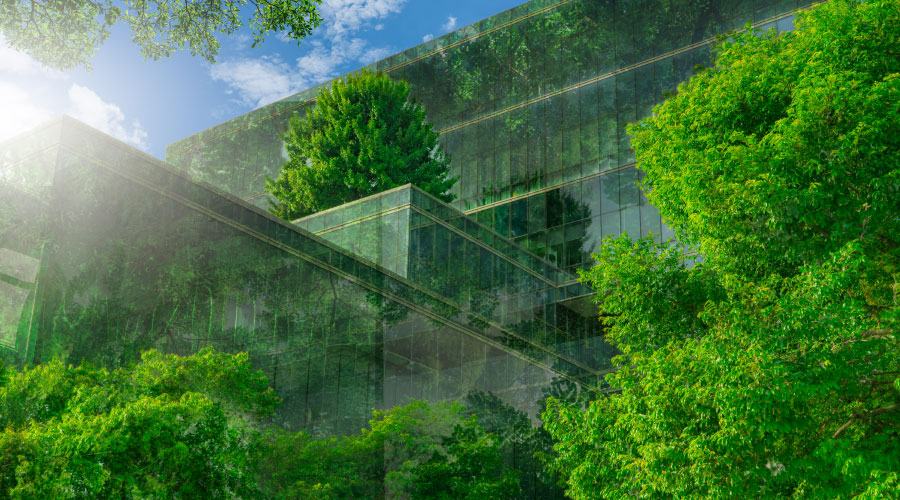Gifford Lawsuit Over LEED Certifications Set Some Guidelines for What Recourse is Available
In another lawsuit brought by energy efficiency professionals who are not LEED certified, Gifford, et al. v. U.S. Green Building Council, et al., it was alleged that USGBC had misrepresented the level of energy efficiency that would be achieved in LEED buildings. The federal judge in New York threw out the case, finding that the non-LEED professionals could not credibly claim to be hurt because LEED does not require professionals to be LEED-accredited in order to seek LEED certifications. The judge also held that the claim that work had actually been taken away from the non-LEED professionals was merely speculative. The Gifford court did not try to decide whether USGBC had misrepresented energy performance. Still, the question remains, if a building ultimately has poor energy performance, even though it is LEED certified, does the buyer have any recourse?
Suing USGBC for refusing to certify is very likely to fail for a lot of reasons. USGBC is private, not like a government agency that typically can be taken to federal court when it acts in an arbitrary manner. The real answer to the complexities is to try to contract in advance for who is responsible for delivering the green building. The project team should meet very early on in the project's development and develop a checklist of green elements that are promised for delivery.
Of course, LEED itself recommends just such an early meeting to coordinate the various disciplines and have building systems and design elements complement each other. The lawyers should then include in the contract or an addendum to it the specific promises as to systems or promised performance or both. If the developer purports to deliver LEED certification at a certain level and by a certain date, those should be specified. If, by contrast, it is recognized that the developer can deliver the green elements but cannot guarantee the ultimate certification, that, too, can be specified.
One suggested model recommends defining the delivery of LEED certification and the tax benefits that might come from it as consequential damages which are waived and therefore not available in a lawsuit by a disappointed buyer. An option is for the contracting parties to appoint a green building facilitator whose job it is to obtain the certification, and the liability for the failure to do so rests solely with that facilitator who would carry insurance for the risk. There are other options and capable counsel should draft creatively to make sure that the parties are satisfied and stay out of litigation.
Finally, it's worth turning back to the issue of the failure to comply with local laws that mandate LEED at a certain level. Some jurisdictions have enacted green building codes, including standards such as those present in ASHRAE's Standard 189.1 or other particulars such as those in New York City's Greater Green Buildings Plan, in which provisions address low-flow toilets, green roof and solar panel tax abatements, energy audits and retrocomissioning, lighting upgrades, photosensor light controls, commercial water sub-metering and more. If LEED certification remains a local law standard, the contractual risk allocation may or may not succeed, depending on the wording of the law.
Stanley N. Alpert is a commercial and environmental attorney with Constantine Cannon LLP, and is a LEED-certified Green Associate. He was formerly the Chief of Environmental Litigation at the U.S. Attorney's Office, Eastern District of New York.
Emissions Regulation: Reason To Go Green
Anyone examining the burgeoning phenomenon of green building should start by understanding its global context and the influence of a carbon-constrained economy. Saving money and creating beautiful, more marketable spaces are two reasons that green building is growing. But one big reason so much is happening so quickly relates to carbon regulation and associated voluntary carbon reductions. Corporations that prepare environmental impact statements for actions that require government approvals (such as re-zoning) are required by law to analyze not just the greenhouse gas impact of their projects but also to address mitigation, where, for example, more severe storms and a rising sea level could jeopardize the project as built.
Increased Regulation
SEC guidance calls for public disclosure of a climate-regulated business environment and potential losses due to climate change. Large plants in Europe have been carbon regulated under the Kyoto treaty for years. California and consortiums of other U.S. states regulate greenhouse gases from power plants and other facilities. Even though the U.S. Congress never passed the Waxman-Markey cap and trade bill in 2008, under the directives of the Supreme Court the federal EPA has been enacting one carbon regulation after another, indirectly putting a price on this particular externality.
Even companies whose specific activities are not yet carbon regulated are taking voluntary action to reduce GHGs, to stay ahead of the regulatory curve and win in the court of public opinion. Saving money doesn't hurt, either. PepsiCo, for example, used its carbon management tools to find over $60 million in energy savings and a 16 percent reduction in per-unit energy use at its beverage plants. Turning back to green buildings, the built environment is responsible for about 40 percent of energy use and 80 percent of electricity use, with the percentage of energy use doubling in New York City where there are fewer private cars.
— Stanley Alpert |
Related Topics:














